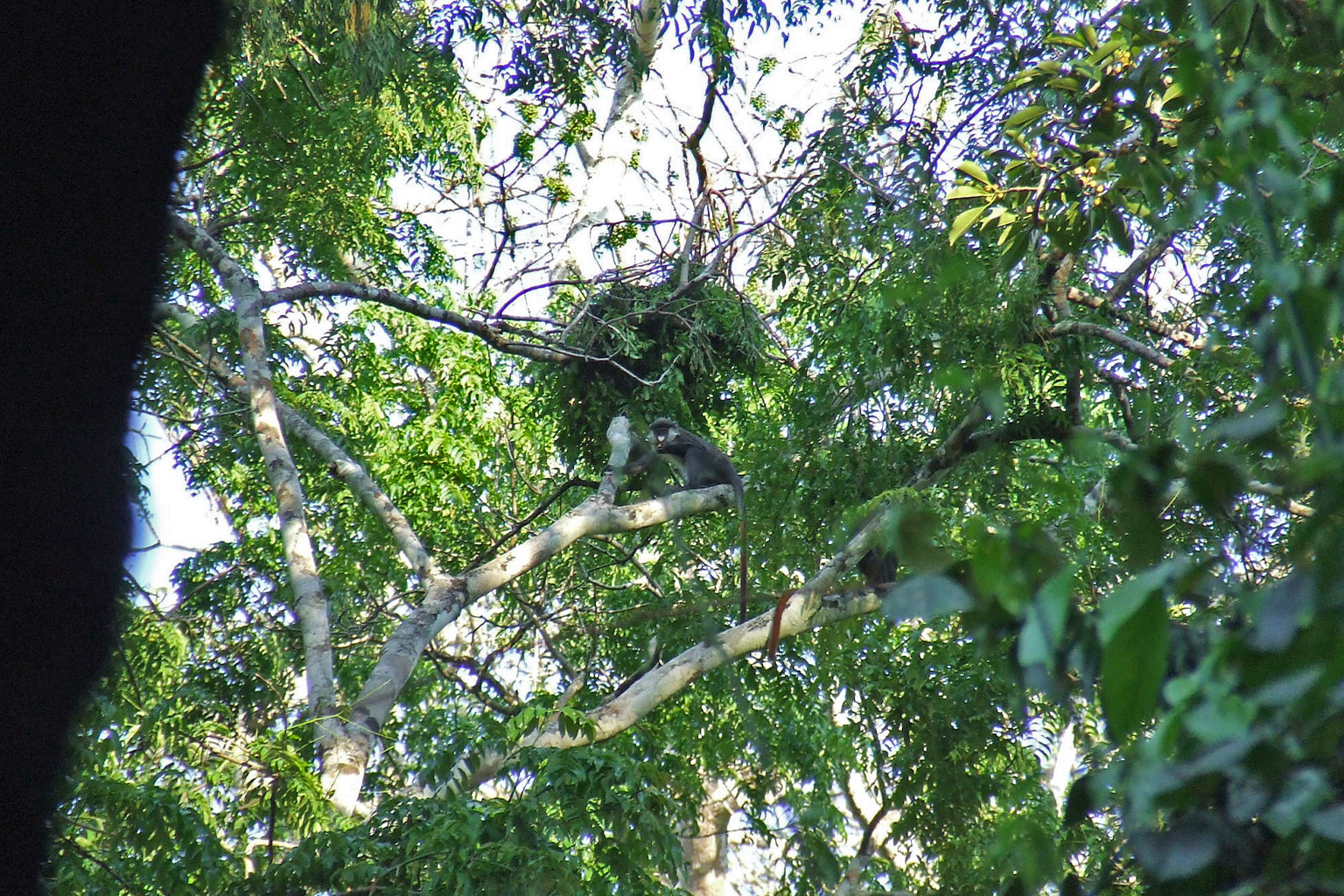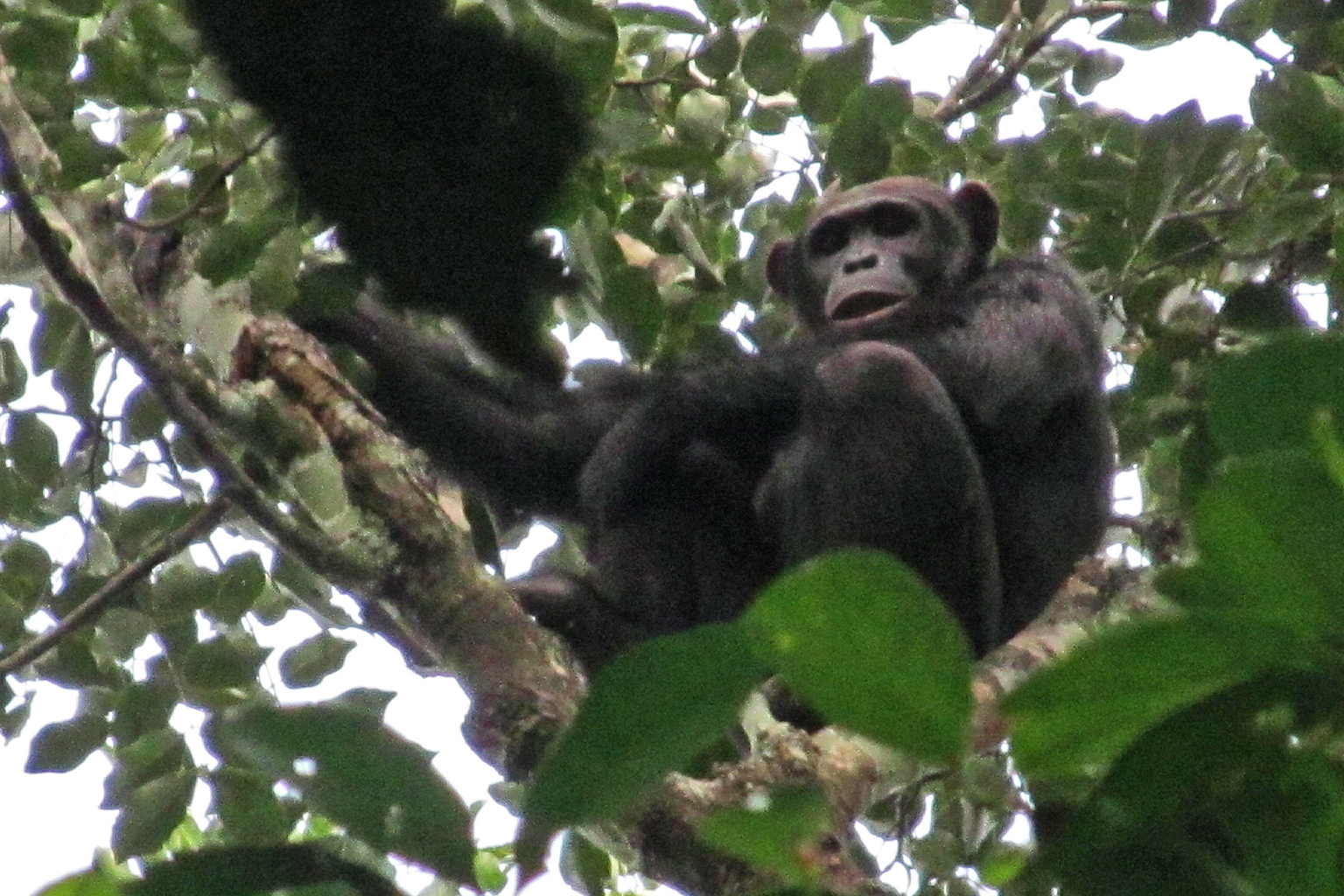- Eastern chimpanzees in the northern Democratic Republic of Congo frequently build nests and sleep overnight on the ground even in areas where predators are present, a recent study finds.
- The ability of these relatively small-bodied apes to sleep on the ground without fire or fortifications suggests that other hominids, including early humans, could have moved from the safety of trees earlier than thought.
- The study also found that chimpanzees were not deterred from ground nesting when they shared space with humans — as long as those humans were not hunting.
- This, the researchers say, suggests chimpanzee conservation and human use of forests can coexist.
Chimpanzees tend to sleep more on the ground than previously thought, a behavior that has implications for their conservation and could help explain how and when early humans abandoned trees to set up home on the ground, a new study says.
Until now, nesting on the ground was considered rare in most populations of chimpanzees. It’s known to be typical of gorillas, in part because of their weight. Fully grown gorillas can weigh more than 200 kilograms (440 pounds), making it difficult to find trees that will support a nest.
A new study found that relatively small-bodied eastern chimpanzees (Pan troglodytes schweinfurthii) in northern Democratic Republic of Congo frequently build nests and sleep overnight on the ground. The study also found this behavior continued even when the chimps share their territory with humans, or with powerful predators like lions, leopards or hyenas; what does keep them off the ground is human hunting.
The findings have implications for the conservation of chimpanzees. More profoundly, the researchers say their findings suggest that humankind’s ancestors could have moved from the trees to the ground earlier than previously believed.
“We have shown that ground nesting is not only common in gorillas, but also in our closer cousins chimpanzees, across a large part of their range (Northern DR Congo),” said study lead author Toni Romani, a researcher at the University of Warsaw. “This has relevance to our understanding of the factors that drove our own ancestors to become fully terrestrial.”


Taming of fire
Scientists believe that hominids — the family of humans and all other modern and extinct great apes — made the ground home millions of years ago. But exactly when and how that happened remains poorly understood.
There have been questions, for example, as to how small-bodied hominids slept on the ground in a world full of large predators. Some scientists have hypothesized that hominids left the safety of trees only after learning to start and control fires, with which they warded off predators; others theorize that hominids protected themselves by building spiky structures.
However, when Romani and his colleagues examined data collected over a nine-year period in the Bili-Uéré landscape in the northern DRC, they found that ground nesting was prevalent among eastern chimpanzees, despite their lack of fire, fortresses or large body mass.
The researchers found that 10.4% of the Bili-Uéré nests were terrestrial.

Using statistical models to analyze factors affecting ground nesting and nest height, the researchers found that chimpanzees built more ground nests in areas with dense forests, and slept on the ground even in areas where large carnivores, or humans, were present. In one striking case, ground nests were found to be particularly abundant in an area that had the highest encounter rates of dangerous predators.
“Our study highlights that neither the large body size of gorillas nor the taming of fire are necessary conditions for hominids to sleep overnight on the ground, even in areas inhabited by multiple species of large carnivore,” the researchers wrote.
The areas with the lowest number of ground nests, however, were those with high rates of human hunting. The researchers assessed the latter rate by the presence of animal carcasses or skins, hunting camps, snares, cartridges, gunshots, and encounters with hunters.

Interesting details
Michael Wilson, a chimpanzee expert at the University of Minnesota, who was not involved in the research, said the study provides “interesting details” about the ground-nesting habits of chimpanzees. But, he said, it must be noted that chimpanzees today face fewer predators than ancient hominids faced — a reality that may affect the outcome of the study.
“This study of Bili chimpanzees found that only one of the remaining large predators of chimpanzees affected their sleeping habits: humans,” Wilson told Mongabay. “However, even though leopards, lions, and hyenas persist in the region, their numbers seem likely to be lower than in the past, and the threats from predators in a contemporary African forest are surely less than our ancestors would have faced sleeping in more open habitats, given the greater numbers and diversity of large predators, both in open habitats, and in the past more generally, before human activities so severely reduced predator numbers.”

Chimpanzee density
The study offers insight into how eastern chimpanzees, listed as endangered on the IUCN Red List, can be protected, said study co-author Cleve Hicks, an associate professor at the University of Warsaw.
“When attempting to safeguard chimpanzee traditions (and of course the chimpanzees themselves), perhaps the approach taken by ‘fortress conservation’ (keeping humans away from the chimpanzees) is not always the best solution; the best approach may instead be enforcing wildlife laws and giving people incentives to protect chimpanzees instead of harming them,” he said.
The authors say a forthcoming paper will help produce more accurate estimates for chimpanzee populations based on nest decay times, details necessary for effective conservation.
“It is vital we have the means to accurately assess numbers of chimpanzees across Africa in order to best protect them,” Romani said.
Additional work is also required to know the styles of ground nest construction in different regions, the types of plants used to build the nests, and the sex of the nesters, the authors said.
Banner image: An eastern chimpanzee (Pan troglodytes schweinfurthii) in Uganda. Image by Bernard DUPONT via Flickr (CC BY-SA 2.0).
Chimps digging wells shows learned behavior that may help amid climate change
Citation:
Romani, T., Tranquilli, S., Roessingh, P., Menken, S. B. J., Mundry, R., Konarzewski, M., & Hicks, T. C. (2023). Factors affecting nest height and ground nesting behaviour in Eastern chimpanzees (Pan troglodytes schweinfurthii) of the northern Democratic Republic of the Congo. Folia Primatologica. doi:10.1163/14219980-bja10010
FEEDBACK: Use this form to send a message to the author of this post. If you want to post a public comment, you can do that at the bottom of the page.
